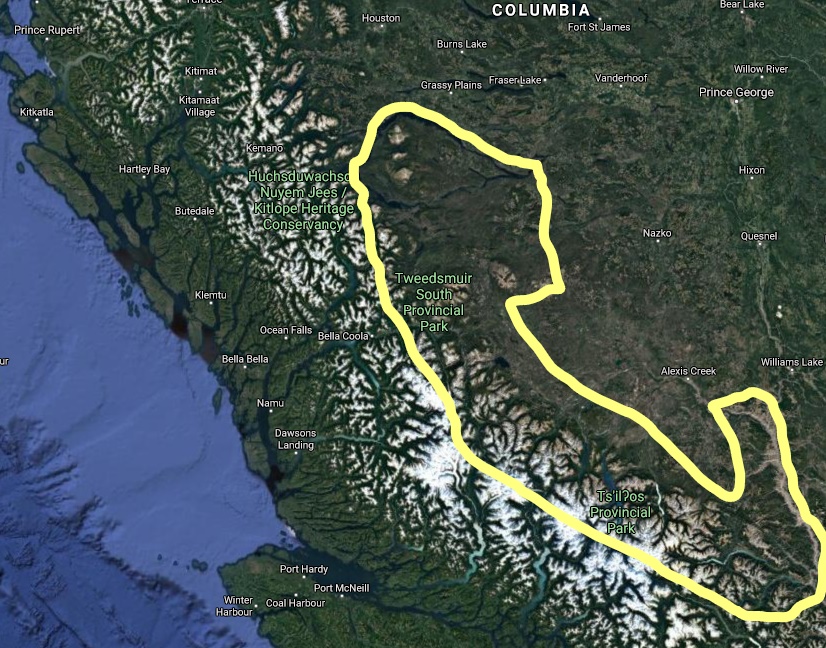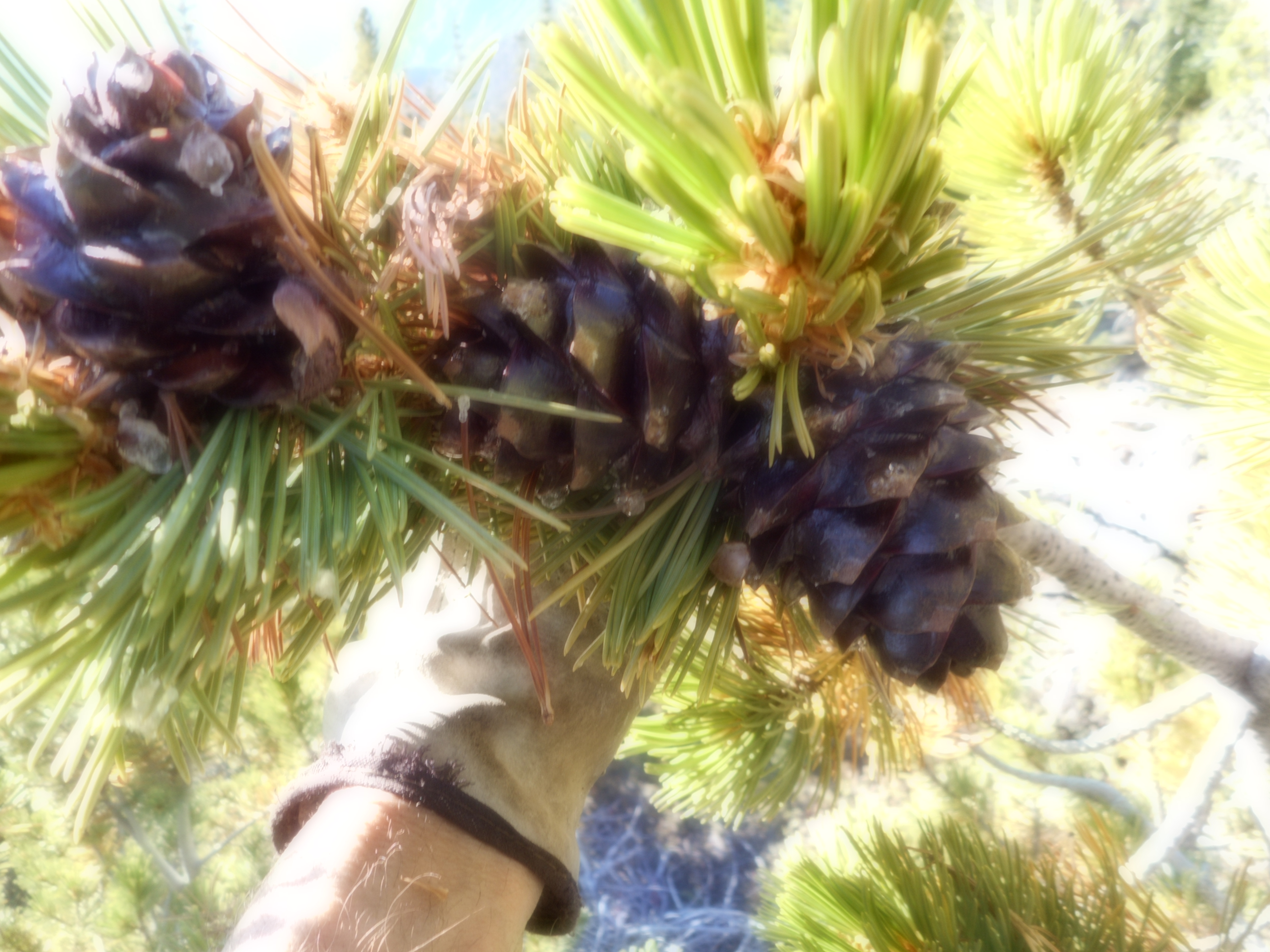The Chilcotin Ark Institute conducts research, conservation and stewardship projects in the Chilcotin Ark. We use the recommendations of the Evergreen Stewardship Plans as our guidelines in all the conservation work that we do. We are involved in data collection and analysis, stakeholder engagement, wildlife and habitat enhancement projects, land and resource management.
We conduct and implement a variety of participatory action research projects to ensure the conservation of nature and wilderness in the Chilcotin Ark and British Columbia in general. Our research is used as a tool to understand problems and, most importantly, to take action for solving them. Instead of just delivering a research report, the results of our participatory action research trigger stakeholder engagement, actions and communal change in land-use practices for wildlife and their habitats.
Responsibility
According to the North American Wildlife Conservation Model (NAWCM) “Wildlife is considered an international resource”. This means that everybody is equally responsible to manage the wildlife. Wildlife and Biodiversity are of international importance and are a measurement of human and ecosystem health.
The United Nations (UN) administered the ‘Convention on International Trade in Endangered Species of Wild Fauna and Flora’ (CITES). The participating states, of which Canada is one, recognize “that wild fauna and flora in their many (…) varied forms are an irreplaceable part of the natural systems of the earth which must be protected for this and the generations to come… The Contracting States are conscious of the ever-growing value of wild fauna and flora from aesthetic, scientific, cultural, recreational and economic points of view; Recognizing that peoples and States are and should be the best protectors of their own wild fauna and flora”
We operate by this principle and believe the responsibility ranges from every individual to all governments and the international community. The Chilcotin Ark Institute promotes responsible resource and land management by all entities and governments from federal, provincial and regional governments, to First Nations, land owners, farmers, ranchers, guide outfitters, tourism operators, forestry, mining, all stakeholders and the public.
The last 30+ years we have focused our work on the Bridge River Watershed area, with a special focus on the South Chilcotin Mountains, located in the south eastern corner of the Chilcotin Ark. By expanding the region of our conservation and stewardship research and projects to the whole Chilcotin Ark we ensure habitat connectivity and climate change resilience. To do so we are striving to create a working landscape concept and management that sustains viable populations of species. The tool we use for measuring the success of our conservation efforts is to achieve maximum wildlife population numbers for the habitat‘s potential carrying capacity, this being the indicator for sustainable land management.

Where We Work – the Chilcotin Ark
We work in the Chilcotin Ark, a complex 2.5 million hectare ecosystem located on the lee side of the Coast Range Mountains. This region is of high ecological value on an international scale due to its high biodiversity and interconnectedness. The term “Ark“ was first used by conservationist Ric Careless, who states that the Chilcotin Ark is an optimal refuge for plants and animals.
The Arks’ high ecological value can be measured in the variety of biogeoclimatic zones. 12 of the 16 biogeoclimatic zones of British Columbia are present in the Chilcotin Ark. Therefore a high biodiversity is found throughout the area. The Chilcotin Ark is home to 11 of the 29 big game species of North America. One of them is the woodland caribou which is federally and provincially protected under the Species at Risk Act. You can also find Canada’s best white bark pine populations in the Chilcotin Ark. White bark pine is an endangered species growing at tree line.

| Biogeoclimatic transition zone | Present in the Chilcotin Ark |
|---|---|
| Boreal Altai Fescue Alpine (BAFA) | X |
| Spruce-Willow-Birch (SWB) | |
| Boreal White and Black Spruce (BWBS) | |
| Sub-Boreal Pine – Spruce (SBPS) | X |
| Sub-Boreal Spruce (SBS) | X |
| Mountain Hemlock (MH) | X |
| Engelmann Spruce-Subalpine Fir (ESSF) | X |
| Montane Spruce (MS) | X |
| Bunchgrass (BG) | X |
| Ponderosa Pine (PP) | X |
| Interior Douglas-Fir (IDF) | X |
| Coastal Douglas-Fir (CDF) | |
| Interior Cedar-Hemlock (ICH) | |
| Coastal Western Hemlock (CWH) | X |
| Interior Mountain Heather Alpine (IMHA) | X |
| Coastal Mountain Heather Alpine (CMHA) | X |
| Big Game Species | Present in the Chilcotin Ark |
|---|---|
| White-tailed deer | x |
| Mule deer | x |
| Coues white-tailed deer | |
| Columbia black-tailed deer | x |
| Sitka black-tailed deer | |
| Rocky Mountain elk | x |
| Roosevelt elk | |
| Tule elk | |
| Canada moose | x |
| Shiras moose | |
| Alaska Yukon moose | |
| Barren ground caribou | |
| Central Canadian barren ground caribou | |
| Woodland caribou | x |
| Mountain caribou | |
| Quebec Labrador caribou | |
| Polar bear | |
| Alaska brown bear | |
| Grizzly bear | x |
| Black bear | x |
| Cougar | x |
| Muskox | |
| Bison | |
| American mountain goat | x |
| Pronghorn | |
| California / Rocky Mountain Bighorn sheep | x |
| Dall sheep | |
| Desert Bighorn sheep | |
| Stone sheep |
Climate Change
Climate change is one of the most controversial topics of our time. Disturbance in ecosystem functions like migration patterns and mismatched birthing times and food availability decrease fitness of wildlife populations. More extreme weather conditions are disrupting ecosystem functions and services. Rapid climate warming requires a faster evolution of species, if they cannot adjust, they will become extinct.
Wildlife species are migrating northward or upward in response to warming climate. While species move upwards about 36 feet per decade in elevation, they have to move about 10 miles north in latitude to achieve the same compensation for the temperature change. Due to the vertical elevation profile in the Chilcotin Ark, wildlife species are able to migrate a short distance vertically up the mountains instead of moving much further north to adapt to climate change. In the near future mountainous areas in the Chilcotin Ark will become an even more valuable refuge for wildlife.
Wildlife Corridors
It’s essential to manage the habitat between parks due to the migratory nature of wildlife that do not limit their habitat according to artificial boundaries. The Chilcotin Ark can function as an important wildlife corridor for migration and shift in habitat due to global warming. The Ark is physically located in the Yellowstone to Yukon Wildway that allows wildlife to move north throughout the North American continent.
Ten parks, three protected areas and four conservation areas are located in the Chilcotin Ark. Although wildlife migrates between these areas, there are no management plans in place for the areas between the protected zones and our 30 years of data collection indicate population numbers are at only 20% of the potential carrying capacity for some species like moose and mule deer. To sustain viable populations the parks within the Ark must not become islands of extinction due to insufficient habitat size. Their interconnectedness ensures habitat connectivity for climate change resilience.
Carbon Storage
While adaptation strategies to climate change are important, mitigating the process is crucial as well. Greenhouse gas emissions are contributing to climate change. Up to 6.4 tonnes of carbon can be stored every year in one hectare of mature trees. Planting trees can be a major contribution to offset carbon emissions.
At the same time the removal of mature forests is a major source of the release of carbon dioxide into the atmosphere that contributes to climate change and threatens the Chilcotin Ark. If intact ecosystems are preserved in the Chilcotin Ark, such as wetlands and old growth forests, the area functions as an immense carbon storage and contributes to the governments net-zero accountability plan.
Forest Restoration
Restoration of ecosystems is a long process, but it is almost never possible to recover it to the original, fully functional state. Therefore preservation of the existing ecosystem and prevention of degradation should be the first choice. In the process of restoration the consideration of human demands on the environment is important, otherwise degradation will likely happen again. Establishing options for sustainable resource use is crucial, so that humans and nature can both thrive. Successful restoration is addressing the needs of all land users and stakeholders. The concept of a working landscape is including these factors and ensures an ecologically healthy and diverse environment into the future.
Parks and Protected Areas in the Chilcotin Ark
- Big Basin Park
- Big Creek Park
- Bishop River Park
- Bridge River Delta Park
- Churn Creek Protected Area
- Dean River Conservancy
- Dzawadi/upper Klinaklini River Conservancy
- Entiako Park
- Fred Antoine Park
- French Bar Creek Park
- Homathko River-tatlayoko Protected Area
- Itcha Ilgachuz Park
- Nuntsi Park
- South Chilcotin Mountains Park
- Ts’il?os Park
- Tweedsmuir Park
- Yalakom Park